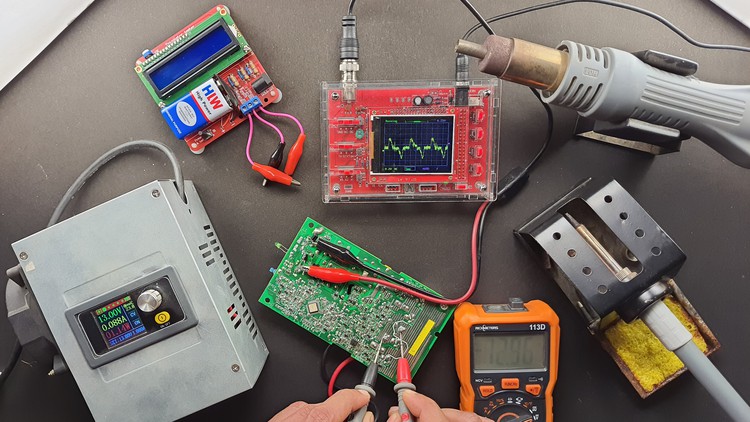
Learn how to identify, troubleshoot and repair electronic components
What you will learn
Learn about the general troubleshooting steps and how to narrow down to the fault in electronics
Learn how to use various tools and equipments to find the fault in electronic
Learn how components like MOSFETs, transistors and IGBT function
Learn how to test if a component is working properly or not and find substitute for it
Description
Electronic systems troubleshooting is an essential skill for electrical engineers and hobbyists alike. Knowing where to look for issues and what to look out for in general can prevent both catastrophic failures and costly replacements.
Knowing how to repair electronics is a useful skill, whether you plan on making a career out of it or just want to be able to fix your own devices when they stop working.
Troubleshooting is the process of identifying problems in malfunctioning equipment and applying corrective measures to return them to their optimal operation. Engineers achieve this by testing the various components either individually or collectively to isolate faults that occur while using the product in question.
You have several options available to you if you’re interested in studying electronics repair in a formal capacity, including college courses, certification programs, and trade apprenticeships. However, it’s also possible to teach yourself the fundamentals at home using helpful resources like textbooks, magazines, and video tutorials, along with some good old-fashioned tinkering.
There is no better way to master repair and troubleshooting than to get your hands dirty. Gather up any old or unused electronics you have lying around and practice taking them apart and putting them back together. This will give a chance to examine their inner workings and make sense of the complicated relationships that exist between them.
As your knowledge grows, you can play around with modifying, upgrading, and switching out components, which will serve as a valuable introduction to building your own electronics from scratch.
Think of figuring out how things function as solving a puzzle. The best electronics specialists tend to be people who excel at problem-solving.
Offer Price- HP 64GB Class 10 MicroSD Memory Card (Buy Now)
Content